
By Leith van Onselen
On Friday, Houses and Holes wrote an interesting article on how the Australian economy appears to have informally adopted aspects of the German ‘kurzarbeit’ system of employment rather than the ‘slash-and-burn’ approach of US laissez faire capitalism:
The basic difference is that Germany has a formal system of automatic stabilisers called “kurzabeit” that revolves around private firms reducing man hours (and the government making up some of the difference in pay) versus the US approach of treating jobs as a variable cost that gets cut when trouble starts. In short, the Germans cut hours while the Americans cut people.
…for the last decade the Australian labour market has been so strong that a private approximation of the German kurzabeit system has developed. Some call it labour hoarding and it is the willingness to use such approaches as reduced hours across a majority of staff rather than cut a minority owing to the fear that skill shortages will cost more in the long run if staff are let go…
In the dark days of the GFC , “Australian kurzabeit” is widely accepted to have prevented much larger job losses…
The downside, however, is that this is also a contributor to our productivity problem, as businesses spreads less hours over more people to ensure they have the depth of staff needed to address demand.
Certainly, Houses and Holes’ thesis is supported by the data. In the years since the global financial crisis (GFC) hit, the official Australian unemployment rate has increased only slightly, compared with the US, where the rate more than doubled:
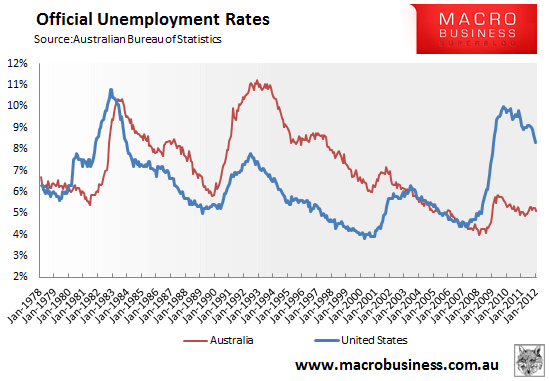
Also, the ratio of people employed to the overall population has fallen only slightly in Australia versus a large 5% dip in the US:
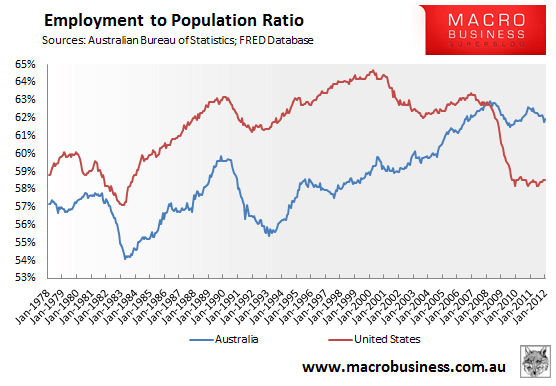
In fact, the US unemployment rate would actually be much higher had their labour force participation rate not fallen sharply in the years following the GFC. In comparison, the Australian participation rate is down only slightly:
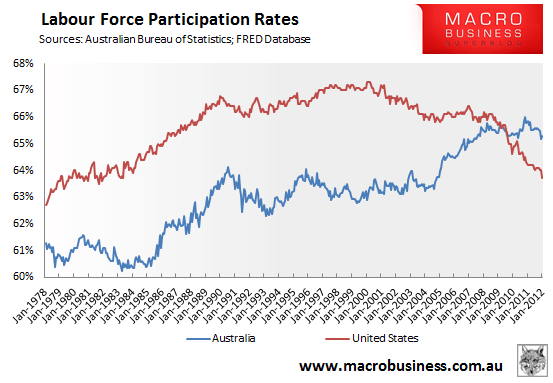
Obviously, Australia’s stronger economy due to the mining boom and better targeted fiscal interventions have played a large role in keeping Australians in jobs and preventing the official unemployment rate from rising too far. But it is also the case that those fortunate enough to have jobs work longer hours in the US than they do in Australia, suggesting that US employers might be trying to extract more output from less labour resources:
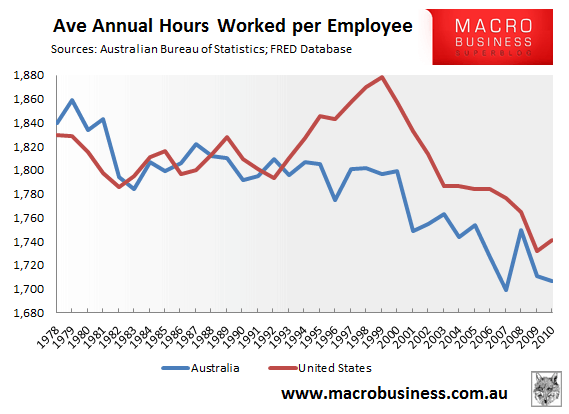
Finally, Houses and Holes mentioned that Australia’s own form of the kurzarbeit could be sapping the nation’s productivity performance, as labour hoarding by Australian employers spreads output over a larger employment base. Again, this claim appears to be supported by evidence, with GDP per hour worked not only remaining well below that in the US, but also flat lining since 2007. In contrast, GDP per hour worked in the US has grown strongly since 2007 as employers have laid-off surplus staff and extracted more output from those still employed:
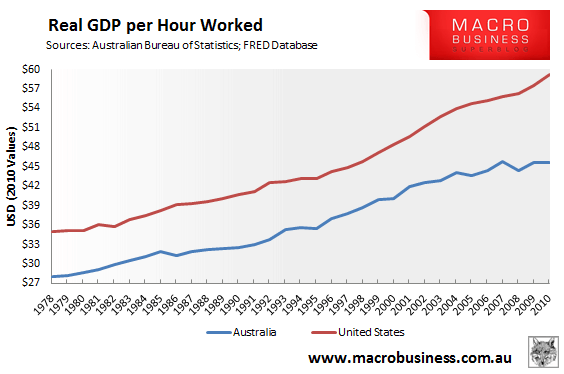
On balance, however, the Australian employment system has, to date, served Australia well. By ensuring that more Australians have remained in work, Australia’s economy has probably been more stable than would otherwise have been the case. And with higher overall levels of employment, there has likely been lower incidents of financial stress from households that are heavily indebted than would have occurred under a US-style system.
We should remember this when considering the options for increasing productivity in the future.

